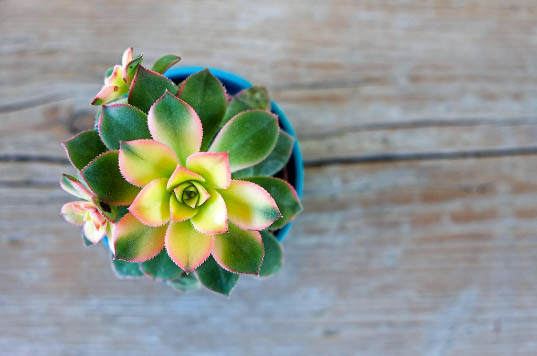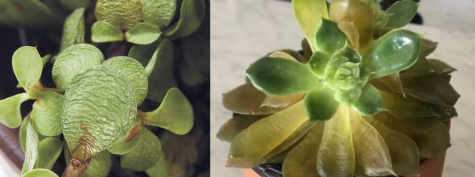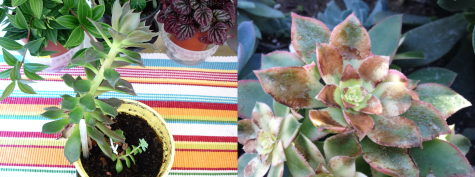Going green @Mac: caring for succulents

Photo courtesy of the Macalester Sustainability Department.
March 30, 2023
Caring for succulents may seem like an easy task, but it can be much more difficult than you’d expect, which often leads to succulents failing to survive. In this post, I plan to provide some helpful tips that can be used to ensure you have a happy and healthy succulent.
Watering
Succulents are desert plants, which means they have evolved to survive with only small amounts of water throughout the year. Because your succulent is most likely not living in the desert, it is important to be aware of how much and how often to water it. In Minnesota, being quite dry currently, watering every 7-10 days should be good. If you live somewhere much more humid, water will not evaporate quite as quickly, and your succulents may not need water for 2-3 weeks. Succulents are well adapted for receiving larger amounts of water relatively scarcely, so when you do water your succulent, make sure to thoroughly drench the soil. Pour enough water that water begins to leak through the drainage hole at the bottom of the pot. If your pot does not have a drainage hole, you may want to consider repotting your succulent into a pot that does, as your succulent may end up becoming over watered if there is now way for extra water to drain. Do not mist your succulents, as this can both cause sunlight to magnify through the water droplets and burn your plant, but can also wash away the powder-like substance many succulents have on their leaves, called
Being able to recognize symptoms of both overwatering and underwatering is important for keeping your succulent healthy. Over and underwatering are common causes of death in succulents. When a succulent is overwatered, the leaves of the succulent become translucent, and if you were to feel the leaves they would be squishy instead of firm. If this starts to occur, stop watering your plant for a week or two and allow the soil and roots to completely dry out. When a succulent is underwatered, the leaves begin to shrivel and dry, and you will likely notice your succulent beginning to drop these shriveled leaves. If you notice this happening, give your succulent a thorough watering.

Sunlight
Exposure to sunlight is very important for succulents. If succulents do not receive enough sunlight they can begin to grow taller in an effort to reach more sunlight. This causes the succulent to become skinnier and the leaves to become smaller. Once your succulent has become “leggy’.’ This process is called etiolation, and once this happens, a succulent is unable to go back to being the short, compact plant it started as unless you take a cutting and propagate it. If you notice your succulent beginning to become leggy, place it in a spot that receives more sunlight. If you do not have a space with more sunlight, you can buy a grow light and set it overtop your succulent. This will expose it to the additional UV rays it was not getting before.
If your succulents are receiving too much light, it can lead to your plant becoming sunburned. This causes the leaves to die and become brittle and crumble easily. If you notice your succulent beginning to become sunburned, move it into a location that still receives a lot of light but where the light is not directly on the succulent.












